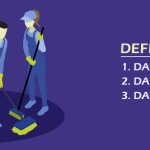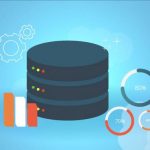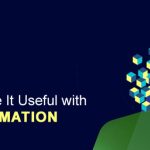Data Enrichment is one of the inconsequential measures of the huge data asepsis process that ensures the reliability and accuracy of the data. It gives the customer data a trailblazing boost.
Simply speaking, grooming up the customer information used by the organization or business is termed the enrichment process. It focuses particularly on adding some new data or supplemental data or information to the datasets to make them accurate and usable.
Through this piece of information, let’s get into the details of data enrichment and explore various aspects related to it including the benefits, practice, steps, and much more.
Data Enrichment – An Overview
Before moving on to anything else, let’s first work on What is Data Enrichment.
As mentioned above, Data enrichment is a crucial process of data management that enriches the richness, accuracy, and utility of raw data.
According to data enrichment meaning, the process is carried out to merge data obtained from external sources against existing databases in the system. This helps to elaborate, refine, and improve the original databases. The process is essential for any company as it helps in maintaining the data reliability for the organization or business that uses the database for outlining essential strategies and decisions and upholding competitive advantages.
But why do companies or businesses need to opt for data enrichment? The organizations look for enrichment processes to systematize the format of the datasets for regularity. Again, adding missing information or new details to the database makes it more valuable.
Data Enrichment and Data Cleansing – Are They Similar?
Yes, this is true. Mostly people misunderstand data enrichment and data cleansing as similar but both are separate processes. Let’s take a quick look at the difference between the processes.
Data cleansing is a process that helps in fixing errors, gaps, and inconsistencies in the database. The cleansing process focuses on improving the consistency and quality of the database. It is primarily carried out to standardize and clean the existing database. The main purpose of data cleansing is to ensure the reliability and accuracy of the data for analysis.
On the other hand, according to the data enrichment definition adding any missing details to fill gaps in the database. The process focuses on the richness and enhancement of the database by adding more information. Through data enrichment, companies can expand their databases with relevant information. The primary purpose of this process is to expand the usefulness and scope of the database.
What is the Importance of Data Enrichment?
We are now absolutely mindful of how every business is constantly bombarded with the latest or new data or information. The total data volume that needs to be generalized is frequently challenging for nearly every brand when managing the datasets. Businesses mostly struggle with managing, justifying, and storing their data sets. And this is when companies look forward to enriching data sets. By enriching data, the companies can unscramble meaningful patterns, understand the markets, competitors, and customers in a better way, and classify hidden trends. Apart from all these, here is how data enrichment is important for your business.
- When the raw data is inaccurate, inconsistent, or missing information, it is futile for any company. Data enrichment cleans, verifies, and standardizes the data to make it complete, reliable, and prolific.
- The data in most of the companies remain secluded in silos. This makes access to the right data or information difficult, and it remains unused. The enrichment process breaks down such silos and integrates data from every source to give your business inclusive and unified information.
- The raw data obtained from different sources lacks context. This makes deriving profitable sights and inferring data difficult. When such data is enriched, it adds context to the database by networking the database with relevant information, meaning, and context.
Data Enrichment – How is the Process Carried out?
Every company follows a unique data enrichment process. The enrichment process depends on the data type collected by the company and the strategic goals they are working to meet. Yet, certain steps are followed by every company or business organization. Scroll down to check on the entire process.
Form Clear Criteria
The primary step in the data enrichment process is setting the enrichment goals and accessing the current data state. What is the data type? What are the primary and secondary sources used to collect the data? Have you checked on all the gaps in the database? The answers to all these questions would help to create clear criteria or strategies before initiating the enrichment of data.
Recognize the Sources of Your Data
The next step is to evaluate and identify the latent external and internal data sources. The sources include CRM systems, marketing automation platforms, ERP systems, social media platforms, industry reports, public databases, and much more. The incoming data is obtained in various formats depending on the source or system the data comes from.
Data Integration and Collection
This step includes data standardization, data transformation, and data cleansing to ensure the compatibility and consistency of the data obtained from different sources. If the data collected comes in different formats or concords it should be converted into a particular format with zero errors through data centralization.
Data Duplication and Matching
Once the data integration process is over, a strict validation of the data should be carried out. This is done by data duplication and matching process. Through the data-matching process, the data collected is linked and identified with records that have similar entities. Post which data duplication process is carried out to eliminate any duplicate records to maintain the integrity and accuracy of the database.
Data Refinement and Quality Assessment
In this step, new attributes are added to the database like industry insights, demographic data, social media profiles, etc. This involves verifying emails, confirming phone numbers, standardizing addresses, etc. The data collected is assessed and errors are identified and corrected.
Continuous Governance and Updating
Data Enrichment isn’t a one-time process. It is a continuous process in which the data needs to be monitored and updated regularly. By reaching this step, the data enriched can be used for reporting and analytics. However, businesses need to work on regular reviews and maintain the accuracy and relevancy of the enriched datasets.
What are the benefits of Data Enrichment?
Businesses look to enrich data for various reasons and gain multiple benefits apart from strategic management and innovation. Scroll down to check on the list of benefits obtained from the data enrichment process.
Improved Data Accuracy
The foremost benefit of this process is that it converts raw data into valuable and actionable databases. Hence, the companies can use the databases for further reporting and processing. As the database is contextual, any missing data fields or anomalies can be identified and modified. This improves the visualization and accuracy of the reports.
Improved Customer Insights
Data Enrichment helps in understanding the customers in a better way. Through enriched data, businesses can create specific customer profiles, that help in targeting the right marketing campaigns, improved customer services, and personalized product suggestions.
Accurate Decision Making
When the data is enriched from external sources, the businesses obtain a broader milieu regarding their data. When the data is enriched, it empowers data analysts and engineers to reveal hidden trends, correlations, and patterns for accurate decision-making that meets the business goals.
Restructured Risk Management
The businesses can gain an improved and completely distinct perspective regarding their market conditions, customers, latest trends, and business operations. In this way, the businesses can identify possible vulnerabilities and risks to create a strategic risk management perception.
Improved Sales and Revenue
When the data is properly enriched, businesses can tailor sales strategies in a better way. The time spent on manual data entries or rectification of entries is saved and hence, the team can focus on other strategic operations. It helps business analysts to understand the latest trends, customer behavior, and preferences. This adds to improved lead generation and conversion rates. The final result is improved sales and revenue.
Opting for data enrichment services henceforth is a boon for businesses. It reshapes the approach of businesses towards strategic planning, data analysis, and customer satisfaction.
Some Best Practices of Data Enrichment
Be it the data engineers or even the programmers, all need a proper set of practices or principles to maximize the value of the data enriched.
Here are some of the best data enrichment examples to ensure the relevance, reliability, and accuracy of the datasets.
- Setting particular goals: It is important to be crystal clear about the objectives or goals behind the data enrichment process. Be it targeting the market, improved analysis, working on risk management, or any other reason, setting a particular goal helps in selecting relevant data sources.
- Ensuring source quality: The quality of the datasets post-enrichment process depends on the credibility of the external or internal sources used. Hence, it is important to keep updating or validating the data with other external trusted data.
- Regular cleaning of data: Data enrichment shouldn’t be a one-time process for any company. Continuous efforts need to be made to clean, verify, and update the data to maintain its quality.
- Adding valuable data: Arrange data that makes your data valuable, insightful, and significant. Businesses look for behavioral patterns to improve marketing maneuvers.
- Automation: Using the latest data enrichment techniques and tools to automate and simplify various processes to reduce errors and increase the efficiency of the data.
- Privacy: Being obedient to the laws designed for data protection is very important. So make sure the entire process is carried out according to the legal standards while respecting the user privacy norms.
Wrapping Up
Data enrichment surely transforms the pitch for businesses looking to uplift their data strategies. It is a broader concept that involves tactical selection and authentication of data or information against reliable sources.
Want more? Data Enrichment is an expert player who understands your customers, creates custom-made experiences to meet their requirements, and makes great selections. So, looking for a data enrichment company to work on your ruined datasets?
Our expert team at DataPlusValue is at their tips to help you out with customized solutions to all your enrichment requirements. We are committed to assisting businesses with enrichment and maintenance procedures through key contact information and insights about the leads. Get in touch with us today with your enrichment needs and rest back for an operative dataset.














